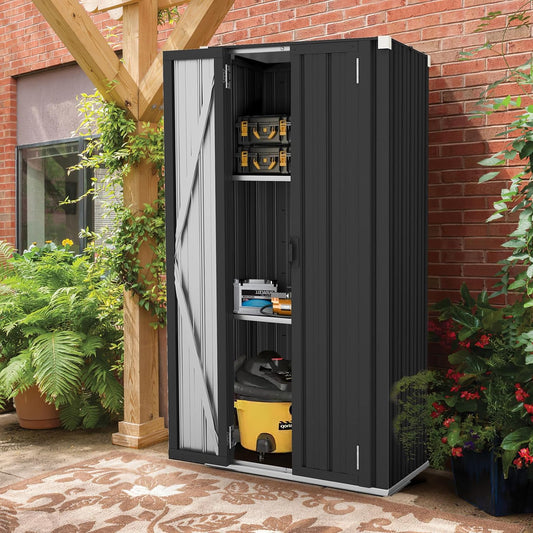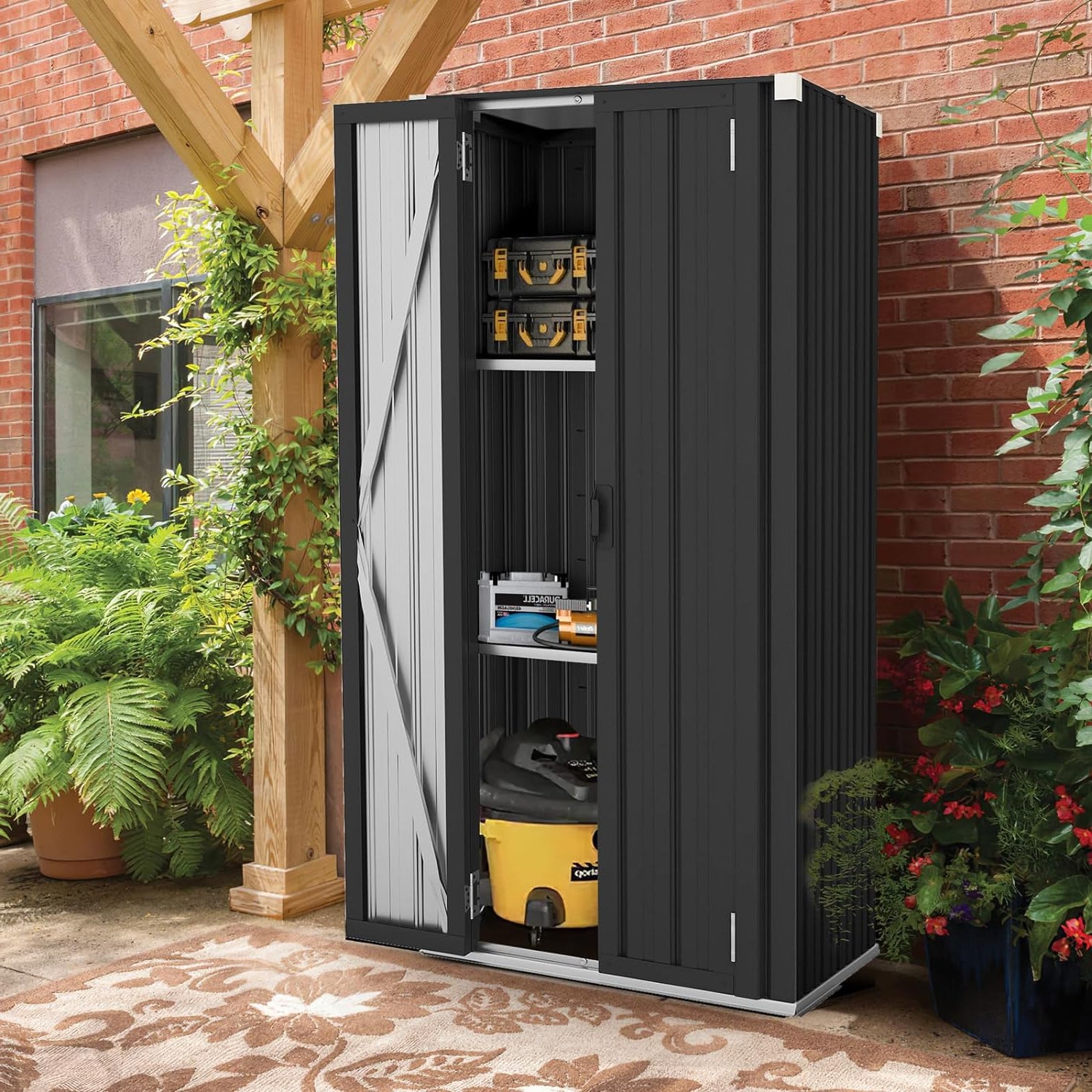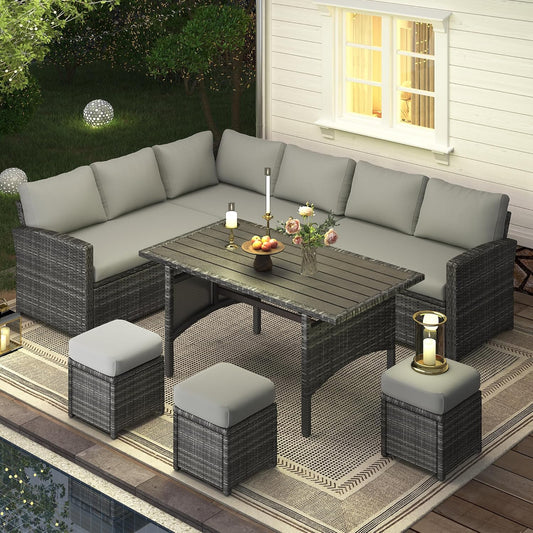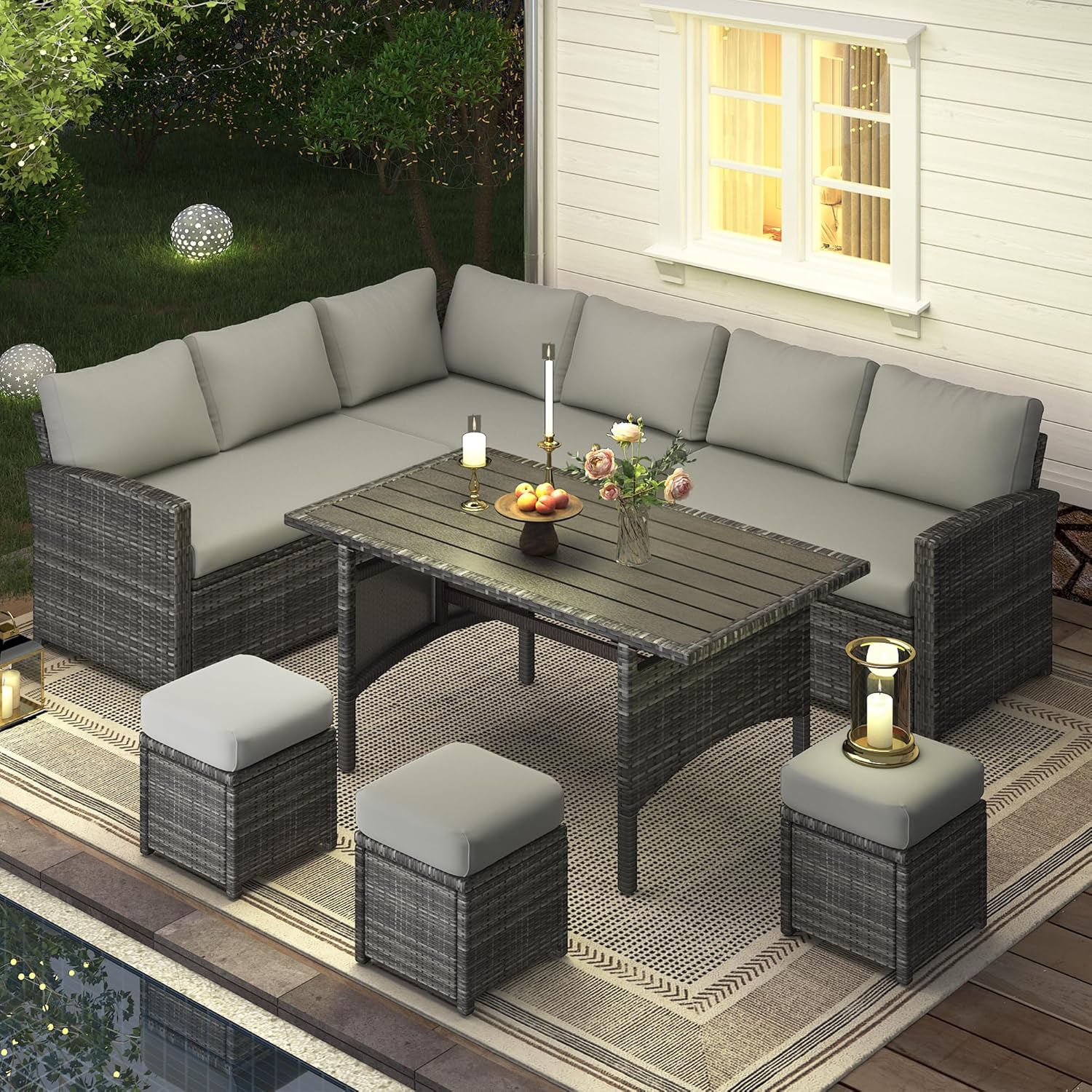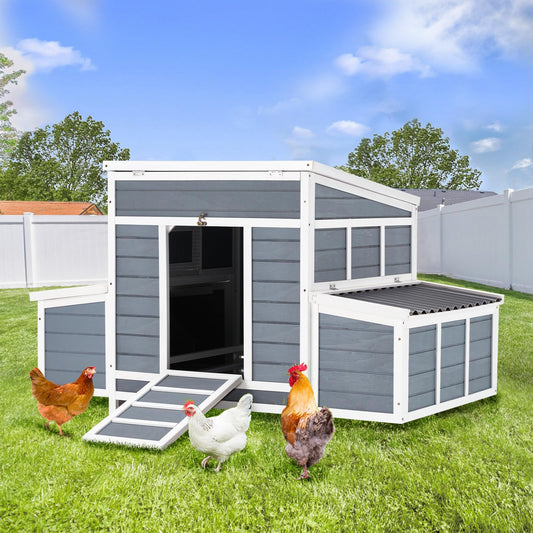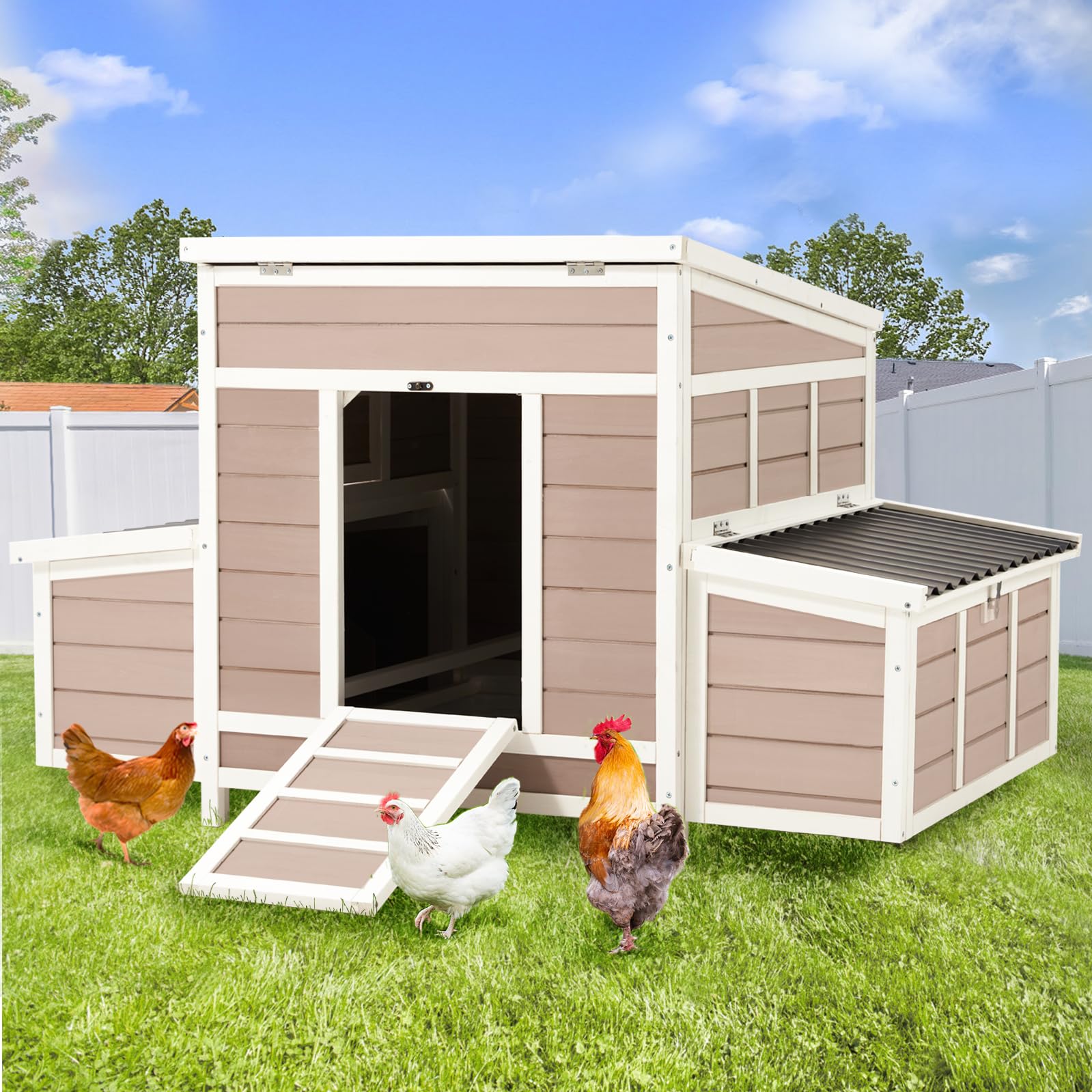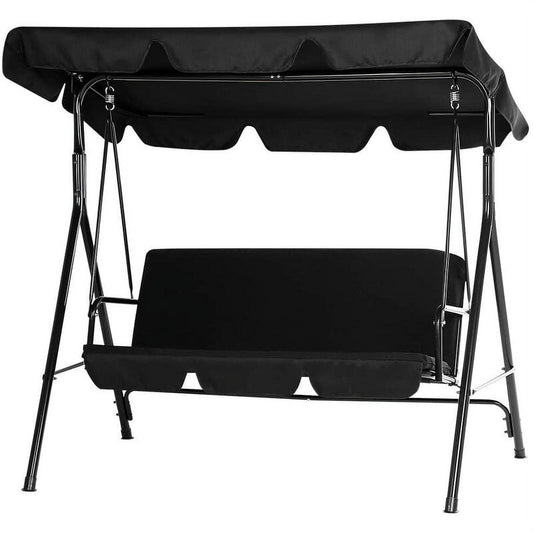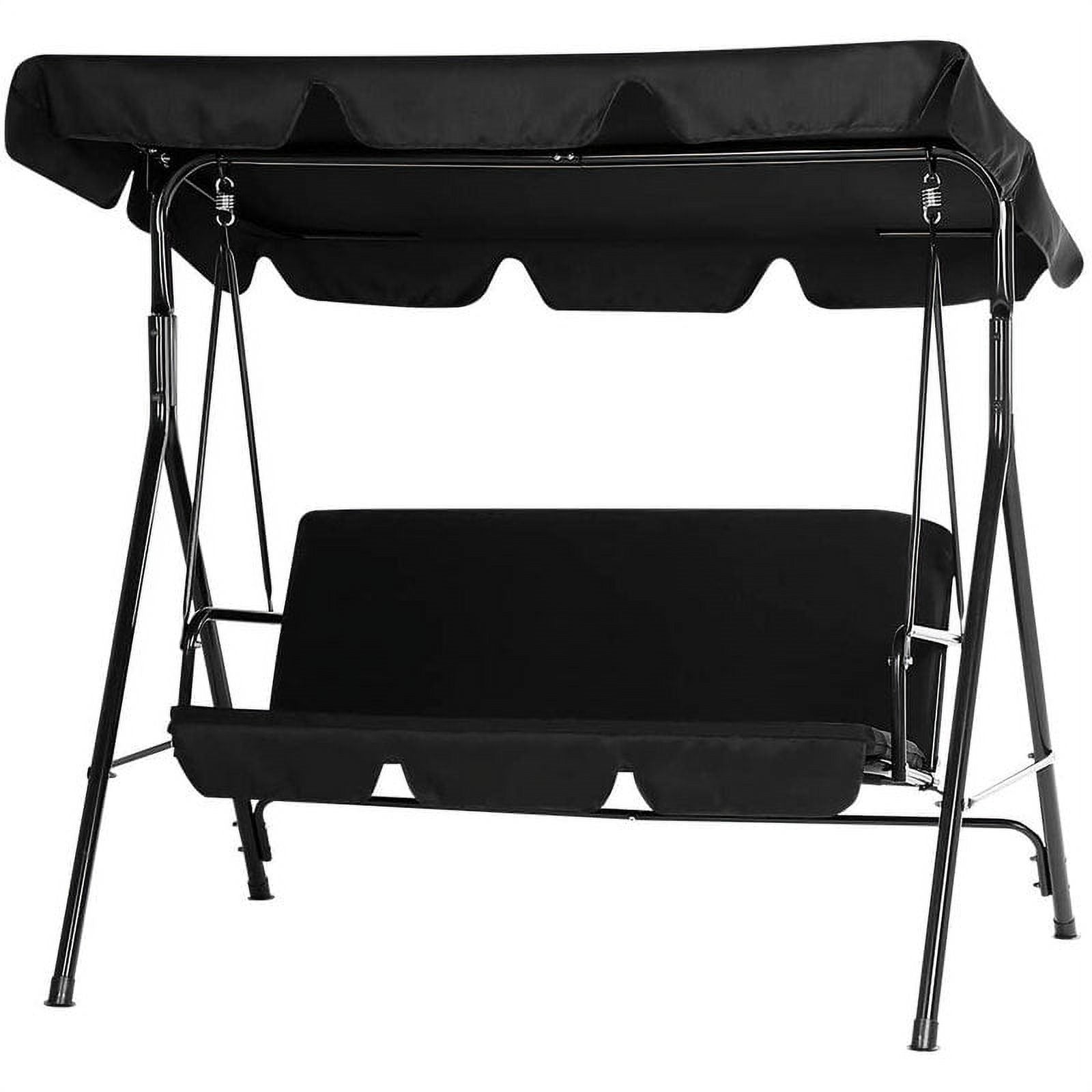Raising chickens in your backyard can be rewarding—fresh eggs, lively pets, and a more sustainable lifestyle. But along with the fun comes a real responsibility: keeping your flock safe from both predators and harsh weather.
A good backyard chicken coop isn’t just a shelter. It’s the first line of defense against raccoons, foxes, wind, rain, and even extreme heat. Whether you’re using a wooden chicken coop, a large metal chicken coop, or a chicken coop with wheels, your setup plays a huge role in flock safety.
In this guide, we’ll walk through the biggest risks your chickens face and how to protect them effectively. Let’s start with understanding who—and what—you’re protecting them from.

What Are the Main Threats to Backyard Chickens?
Chickens may seem tough, but they’re easy targets for both natural predators and rough weather. Knowing what you're up against helps you choose the right design and materials for your outdoor chicken coop.
1. Who Are the Most Common Predators?
Different regions face different threats. In North America, raccoons are notorious for opening latches and stealing eggs. In Europe, foxes often dig under coops. In Australia, goannas and snakes can invade even tightly built pens.
Here’s a look at major predator risks by region:
|
Region |
Top Predator |
Risk Level |
|
North America |
Raccoon |
High |
|
Europe |
Fox |
Medium |
|
Australia |
Goanna |
Medium |
|
Rural Asia |
Snakes |
High |
To defend your flock, many chicken owners now choose a predator proof chicken coop—built with strong mesh, raised floors, and secure locks. These features are especially critical if you keep your coop in open areas or near the woods.
Tip: Even if you live in the city, don’t assume you’re safe. Urban predators like stray dogs, raccoons, and rats are surprisingly resourceful.
2. What Weather Extremes Pose Serious Risks?
Your coop doesn’t just need to fight off predators—it must also protect chickens from extreme weather. Here’s what to watch for:
①Cold winters: Without insulation or wind protection, chickens can suffer frostbite or illness.
②Hot summers: Chickens are prone to overheating. Poor ventilation in a chicken coop for six hens can lead to heatstroke.
③Heavy rain and flooding: Wet bedding encourages mold and disease. A raised wooden chicken coop or chicken coop with wheels helps avoid standing water.
④Strong wind: Lightweight coops can shift or break. Anchoring your outdoor chicken coop is essential.
Proper design and placement are your best defense against climate stress. We’ll explore these solutions more in later sections.
The YODOLLA Large Outdoor Wooden Chicken Coop is a sturdy and spacious solution for backyard poultry keepers. Crafted from weather-resistant wood, it offers a secure environment for your chickens, protecting them from predators and harsh weather conditions.

Why Is a Secure Coop Essential for Chicken Safety?
When it comes to keeping your chickens safe, the quality of your coop is everything. A backyard chicken coop is more than a shelter—it’s your flock’s protection against predators and weather. If the design is weak or the materials too flimsy, chickens become easy targets, especially at night when most predators strike.
The design of the coop plays a big role in defending against common threats. Raccoons can lift loose latches, foxes can dig underneath, and snakes can slip through gaps as small as an inch. That’s why many chicken owners now choose a predator proof chicken coop, which often includes hardware cloth instead of chicken wire, solid floors or raised bases, and locking doors that animals can’t open. An enclosed run adds an extra layer of security during the day, especially from hawks and stray cats.
But safety isn’t just about design—it’s also about materials. Wooden chicken coops are classic and easy to build or modify, but they need weather treatment to hold up long-term. If you’re in a high-risk or open area, a large metal chicken coop is a better option. It’s stronger, harder for predators to damage, and more durable against weather. Plastic or composite options work best for small flocks in urban spaces where predator pressure is low, and maintenance needs to be minimal.
No matter the material, reinforcing key points like the nesting box, coop door, and underside is essential. Chickens are most vulnerable at night, so these spots should be predator-proof by design. Even if you own a compact chicken coop for six hens, it must have the same safety features as a larger model.
Where Should You Place Your Chicken Coop?
Even the best-built coop can fail if it’s placed in the wrong part of your yard. Choosing the right location for your outdoor chicken coop is critical—it affects everything from drainage and ventilation to predator risk and egg production.
First, avoid placing the coop in a low-lying area. After heavy rain, water tends to pool in these spots, leading to wet bedding and disease. Chickens hate damp environments, and standing water attracts flies and bacteria. If your yard floods easily, a chicken coop with wheels gives you flexibility to move it as conditions change.
Next, think about light and shade. Your chickens need morning sun to warm up and stay active, especially during colder months. Placing the coop where it gets early light helps encourage natural egg-laying rhythms. But in summer, too much heat can be dangerous. Afternoon shade—whether from trees, walls, or a shade cloth—helps prevent overheating. A mix of sun and shade keeps your flock healthy year-round.
Proximity to your house also matters. A coop that’s too far away can be hard to monitor. By placing your backyard chicken coop within sight and hearing distance, you’ll notice problems faster—whether it's a predator sneaking around, a water bucket tipping over, or one of your hens in distress. It also makes daily chores like egg collecting and feeding easier.
Finally, if possible, face the coop entrance east. This small detail ensures the birds wake up with the sunrise and helps keep the inside of the coop dry and well-lit. It’s a trick that experienced chicken keepers swear by, especially when raising a flock in a wooden chicken coop or fixed structure.
The YODOLLA 84” Large Wooden Chicken Coop is an excellent choice for backyard poultry enthusiasts seeking a spacious and secure environment for their flock. Designed to comfortably house up to 10 chickens, this coop features a walk-in design that simplifies feeding, cleaning, and egg collection. Constructed from durable fir wood and equipped with a waterproof roof, it ensures protection against various weather conditions. Additionally, the coop includes multiple nesting boxes and a secure run area, providing a safe and comfortable space for your hens to thrive.

How Can You Make Your Coop Weather-Resistant?
Weather can be just as dangerous to your flock as predators. A proper backyard chicken coop needs to withstand heat, cold, rain, and strong winds—especially if it's placed in an open yard without natural cover. Whether you're using a wooden chicken coop, a chicken coop with wheels, or a large metal chicken coop, the way you prepare for the weather can protect your chickens’ health and comfort year-round.
In colder months, insulation is the priority. Chickens tolerate low temperatures better than drafts. Line the inside walls of your outdoor chicken coop with foam boards or attach straw bales outside the structure. At night, cover open vents with breathable fabric to reduce airflow while maintaining ventilation. For extra protection, add a thick layer of straw or pine shavings on the floor.
In summer, airflow becomes essential. Poorly ventilated coops trap heat and moisture, increasing the risk of heatstroke. Your coop should have mesh panels, adjustable vents, and plenty of shade. If your yard lacks trees, use a tarp or roof extension. This is especially important in coops housing multiple hens, such as a chicken coop for six hens.
During rainy seasons, water can quickly become a problem. Standing water near or inside the coop leads to rot, mold, and sickness. Use a sloped, waterproof roof and raise the floor at least a few inches off the ground. A chicken coop with wheels can be moved easily after storms to drier ground, which is perfect for managing seasonal flooding.
High winds can also damage your structure. If you're in a windy area, secure the coop with ground anchors or sandbags. Metal frames offer the most stability, so a large metal chicken coop is a smart investment for those facing frequent storms.
Here’s a quick overview of how to weatherproof your coop based on different climate conditions:
|
Weather Condition |
Protection Needed |
Ideal Coop Type |
|
Cold Winter |
Insulated walls, draft-free vents |
Wooden chicken coop with foam or straw lining |
|
Hot Summer |
Shade, airflow panels, mesh vents |
Outdoor chicken coop with shade cover |
|
Heavy Rain |
Slanted waterproof roof, raised floor |
Chicken coop with wheels or raised wooden coop |
|
High Wind |
Anchored base, strong frame |
Large metal chicken coop with solid anchoring |
When Should You Lock Up And Check Your Coop?
No matter how well-built your predator proof chicken coop is, routine checks and good habits are what truly keep your flock safe. Most predator attacks and damage happen not because the coop is weak, but because it’s left unlocked or unnoticed for too long.
The most important daily habit is locking the coop at dusk. Chickens naturally return to their roosts as the sun sets, but many predators like raccoons, coyotes, and owls start hunting at night. Make it a routine to close and secure every door, latch, and window before dark. If you can’t be home at that time, automatic coop doors are a great option—they open and close on a timer or light sensor.
Along with locking up, do a brief walk-around inspection each morning and evening. Look for signs of digging near the base, loose mesh, broken wood, or tampered locks. If you use a wooden chicken coop, check for moisture damage or rot after heavy rain. With a large metal chicken coop, watch for rust or sharp edges.
Once a week, clean out old bedding, refresh the nesting boxes, and sanitize waterers and feeders. This helps prevent parasites and reduces odor. Once a month, do a full deep clean—scrub the floors, inspect all hinges, and check for mites or mold.
Your chickens can also help signal when something’s wrong. If they avoid part of the coop, stop laying eggs, or seem restless at night, it might be due to a threat nearby. Trust their behavior and investigate right away.
In short, even the best backyard chicken coop needs your attention. Regular cleaning, inspections, and consistent habits make all the difference. Your chickens will be happier, healthier, and far less likely to suffer from predators or bad weather surprises.
Looking for flexibility in your backyard setup? The YODOLLA 95" Large Wooden Chicken Coop with Wheels makes it easy to move your flock to fresh ground anytime. With a sturdy fir wood build, ample run space, and convenient nesting and cleaning features, it's a smart pick for anyone raising chickens in changing outdoor conditions.

Conclusion
Keeping your chickens safe requires more than just a basic shelter. From choosing the right materials and placing your coop wisely, to reinforcing it against predators and weather—every detail matters. A well-built, weather-resistant, and regularly maintained backyard chicken coop can make the difference between a vulnerable flock and a thriving one. With the right setup and habits, you can raise healthy hens that stay protected year-round.















